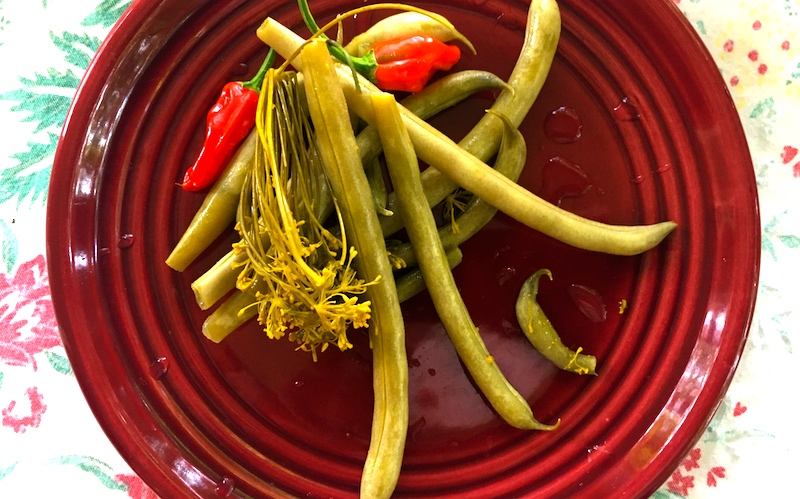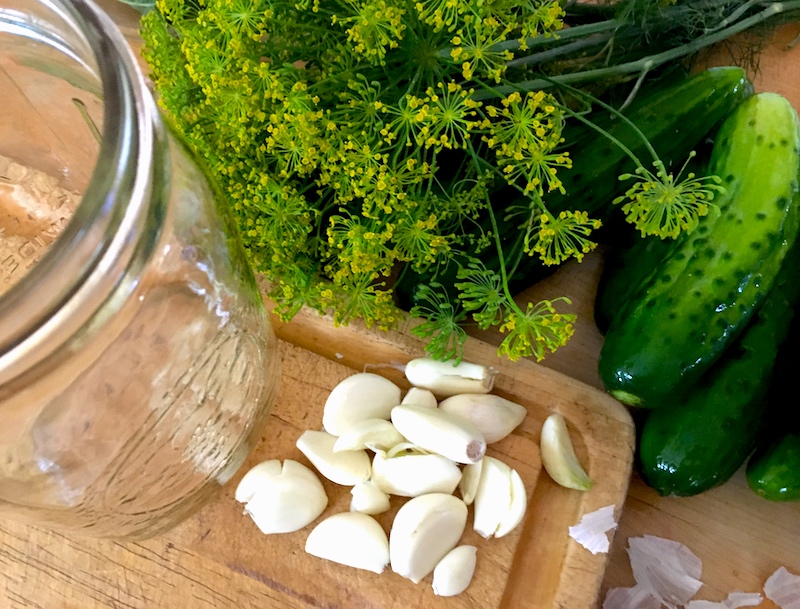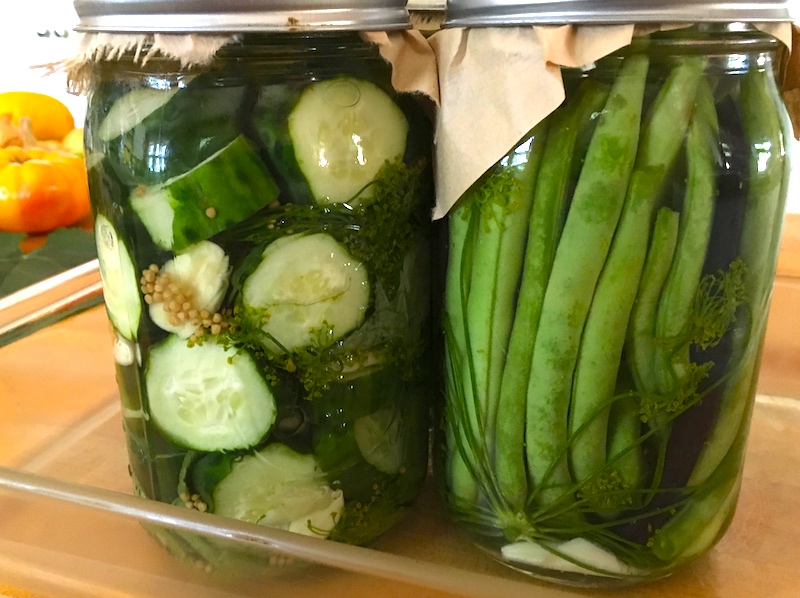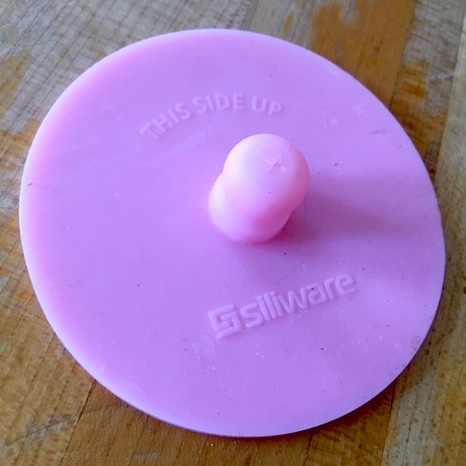
Fermentation Fascination: Try It, You'll Like It, Guaranteed!
"Foods like yogurt, kimchi, sauerkraut and kombucha increased the diversity of gut microbes and led to lower levels of inflammation," according to an article in the New York Times describing a new study from researchers at Stanford University.

This is welcome news considering the pounds (and pounds) of cucumbers and beans I've been getting from our CSA this summer and turning into pickles. If you've read past posts about my methods for preserving the hundred-plus pounds of fabulous Astiana tomatoes from Ayers Creek Farm that I roast every summer, you'll know that I'm not big on huge messes or laborious processes.
Which is why pickling vegetables by lacto-fermentation is high on my list. First, it's ridiculously easy…all it takes is salt, water and time, often a week or less. You can use herbs to flavor it—I'm partial to traditional dill, garlic and mustard seeds for cukes and "dilly beans"—but plain is just fine, too. Second, it requires no special equipment, just a clean glass jar with a tight-fitting lid, and no cooking or heating, a godsend on hot summer days when fresh vegetables are cascading in from local farms. Third is the health aspect, outlined in the study linked above.

But really, I wouldn't bother with it if these pickles didn't taste great. Crunchy, briny without being overly tart, they have a freshness and snap that you don't get from water bath or pressure-canned methods. The only drawback to this method is that because the live bacteria hasn't been killed by cooking, these pickles aren't shelf-stable and will need to be refrigerated.
So far this summer I've made sauerkraut, the aforementioned cucumber pickles and dilly beans, and will soon be making a couple of quarts of Hank Shaw's sour corn to have with tacos, relishes and salads. After that, who knows? I'll definitely keep you posted!
Just click for recipes for sauerkraut, garlic dill pickles, quick refrigerator pickles, and Hank Shaw's Southern Sour Corn.
Lacto-Fermented Garlic "Dilly" Beans
2 clean wide-mouth quart jars
2 lbs. green beans
2 qts. water
6 Tbsp. sea salt
4 dill flower heads
1 head garlic, cloves separated and peeled
Make a 5 percent brine solution by adding the salt to the 2 quarts water in a saucepan or bowl. Stir until the salt dissolves completely.
Push one dill flower head into the bottom of the quart jar along with two cloves of garlic. Holding the jar on its side, start packing the beans into the jar along with half of the garlic cloves. The tighter the beans are packed, the less likely they'll be to float up to the surface during pickling. Make sure the beans stay 1" below the rim of the jar; if they're too long, simply snap them off.
When you can't jam any more beans into the jar, take a second dill flower head and push it into the upright beans, again trying to keep it 1" below the rim. Stir the brine to dissolve any remaining salt crystals and pour it into the jar of beans until it rises to 1/2" below the rim.

Place a lid on the jar and screw it down until it's finger-tight, then back it off about a half turn to give the bacteria room to "breathe" and for any brine to escape during pickling. You can also use a commercial pickle pipe secured with a canning ring for the same purpose, or simply take half a #4 or larger paper coffee filter, place it over the top of the jar and screw it down with a canning ring.
Repeat with second jar.
Place both jars on a plate or in a small baking dish to catch any liquid that escapes and keep them in a cool, dark place (like a basement) for several days. In a couple of days you will notice the brine getting cloudy, and it will have a distinctly vinegar-y smell. This means your brine is working! After five days you can test the beans to see if they're to your liking or leave them for another couple of days and they'll continue to get more pickled. (I usually leave them at least a week to 10 days.)
Because this method does not kill the (healthful, probiotic) live bacteria in the brine through processing in a water bath or pressure canner, the pickles are not shelf stable and must be stored in the refrigerator. If you used a pickle pipe or coffee filter for the pickling process, simply remove them and replace with a solid lid or canning lid and ring.

NOTE: When you open the jar you may see a spongy, grey mass floating on top of your pickles (photo, right). As Douglas Adams wrote in "The Hitchhiker's Guide to the Galaxy," DON'T PANIC. This is perfectly normal and your pickles are not affected. The spongy mass can be easily lifted out and disposed of. Your pickles are good to go!